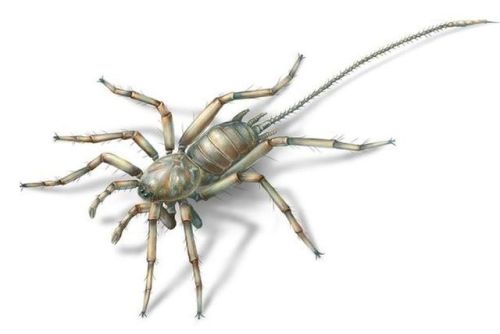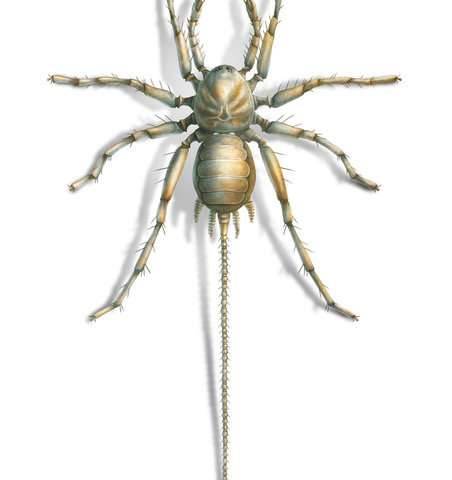Unusual Cretaceous spiders Arachnids are held to be scary enough by some people without added tails
Unusual Cretaceous spidersArachnids are held to be scary enough by some people without added tails more than doubling their apparent size, but they did exist once upon a time…Several specimens have turned up in the fossilised tree sap known as amber that dates from a hundred million years ago and is mined in what is now Burma. They are technically (according to taxonomists who know these things) only proto-spiders, because they display a mixture of archaic (said tail) and modern (pedipalps aka a pair of feelers, silk spinnerets and fangs of course) features, but they still look the part to me.No one knows what the insects used these appendages for, whether as sensors or for balance (knowing nature maybe both and more at once), but they definitely make for an impressive appearance. Known as Chimerarachne yingi (named after the chimera of Greek mythology because of its mixed characteristics) this family of spiders has some distant descendants living in the forests of modern South East Asia.. Each specimen has a body around 3mm long, and a 5mm tail covered in short hairs.The new finds provide a missing link between ancestral and modern forms of this old order of arthropods. Tails have been found in an ancestral family of spiders called Uraraneids, already present before the end Permian extinction 251 million years ago. Specimens dating from 290 million years ago have the tails but no silk spinnerets while the progenitor family’s fossils date back to 380 million years ago, way back in the Devonian age of fishes when life was just beginning to move onto the land. These fall somewhere along the line that traces to modern tail less spiders. While no living spiders have tails, their cousins the scorpions do, complete with stinger, though whether large tailed spiders ever existed remains a matter for the fossil record to reveal.Burmite, as the fossil sap from this locale was known when the gem trade was more poetic (see http://bit.ly/2rGyVZM and http://bit.ly/2BXhT9Q) has produced many interesting finds in the last years, since its true age was only recently realised. Museum drawers, old collections and new finds (especially now that dealers are sensitised to the value of the fossils rather than just cutting them out and chucking them away) have bought us such finds as a bird’s wings (see http://bit.ly/2hpvCQKand http://bit.ly/2rGLGBN) swiftly followed by a whole baby bird (http://bit.ly/2C8DsW1), an extraordinary piece of dinosaur tail with attached feathers (see http://bit.ly/2jLhLBT ) a whole new order of alien like insect (http://bit.ly/2E3Likk), ticks filled with potential dinosaur blood (see http://bit.ly/2BbR8l4a) revealing a precious glimpse of the long vanished ecosystem (see http://bit.ly/2BboqRh)And before you wonder, non lethal arachnids are more than welcome in our home, if nothing else they eat mozzies.LozImage credit: University of Kansashttp://bit.ly/2nFf2Ojhttp://bit.ly/2BXckZ0http://bit.ly/2BXckZ0http://bit.ly/2nMhmSThttp://bit.ly/2s5WbR2Original papers, paywall access: http://go.nature.com/2FRhB6O and http://go.nature.com/2nLZV51 -- source link
Tumblr Blog : the-earth-story.com
#science#geology#fossil#fossilfriday#spider#arachnid#cretaceous#evolution#biology#amber


